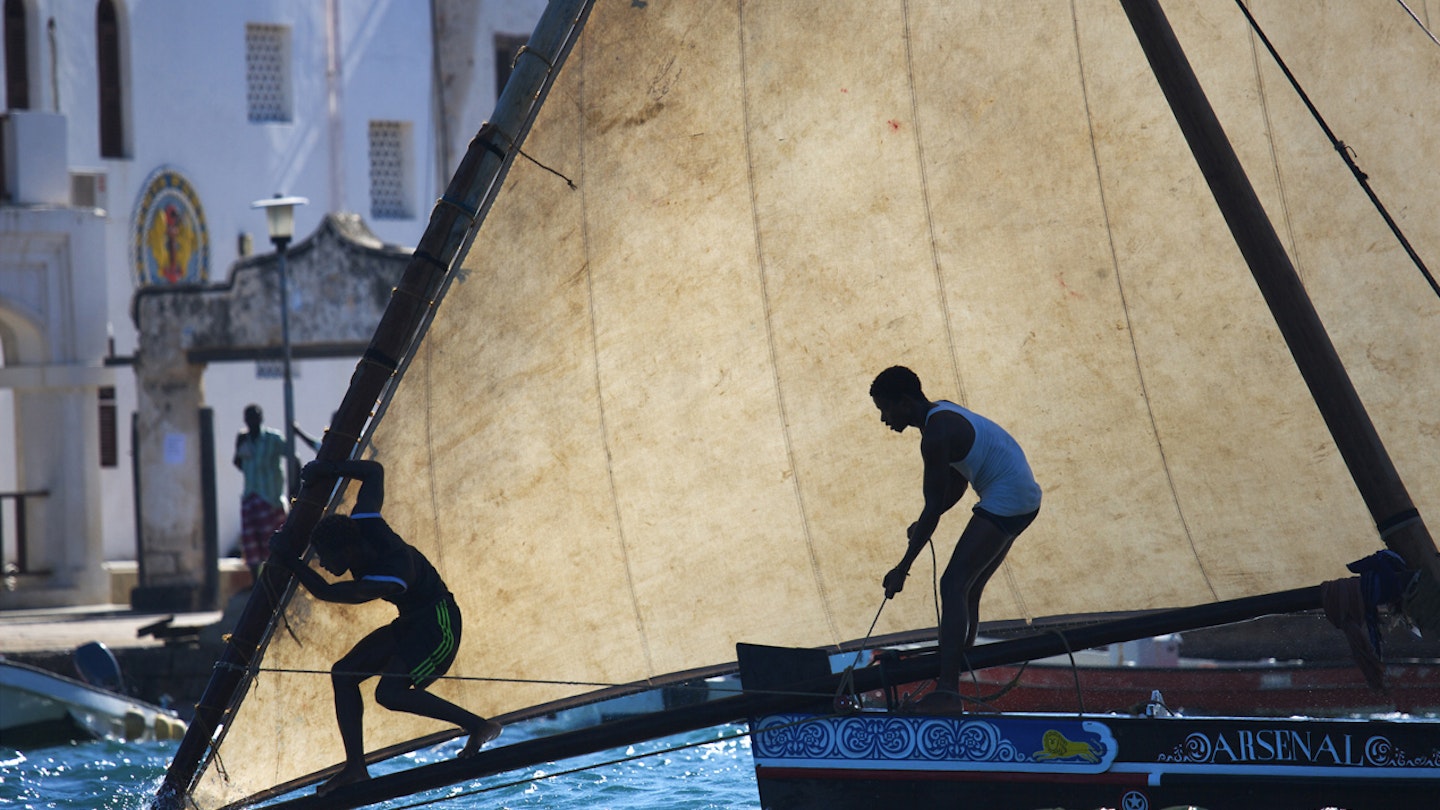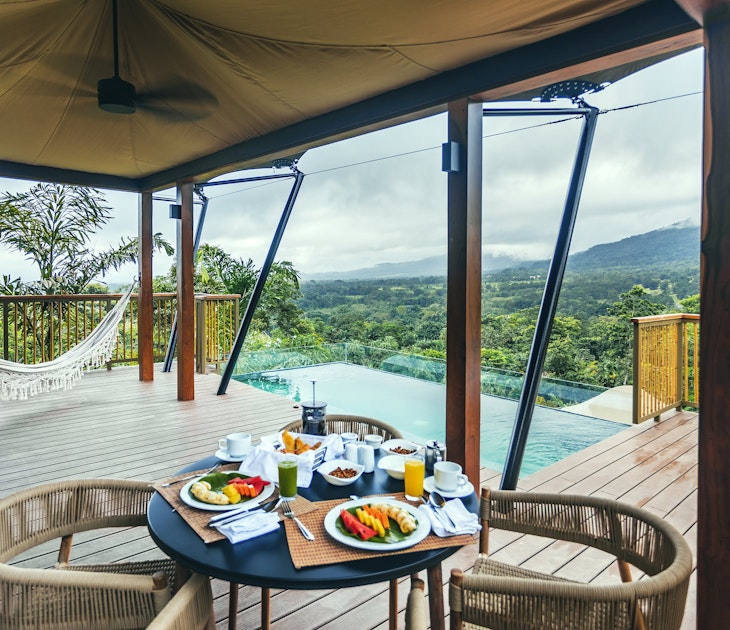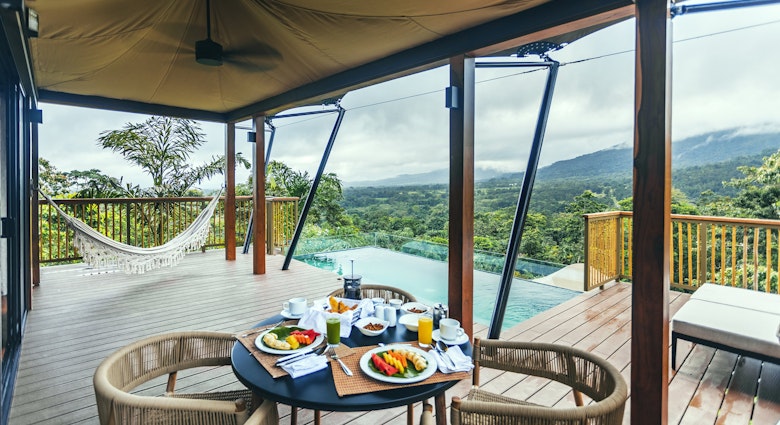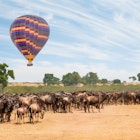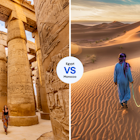We're taking a look through our archive of travel writing to highlight all the ways the world has changed, as well as some of the ways it's stayed the same. In this travel essay from 2011, Amanda Canning reports on the archipelago of Lamu, just off the coast of Kenya, where medieval stone streets trace a history intermingled with fortunes large and small.
Editor's note: In the years since publication of this article, Kenya has seen a spate of terrorist attacks. The US State Department advises against travel to all of Lamu County, while the UK's Foreign Commonwealth Office excludes Lamu Island from its travel advisory (while advising against travel to greater Lamu County). Check the latest governmental advice before considering travel.
Dusk falls over Lamu. Old men sit chatting under the canopy of the ancient almond tree in Mkunguni Square, their rubber sandals tossed aside as legs are stretched and knees idly brought up to chests. A group of young women, black eyes darting behind their niqabs, speak in low tones to a local magic man. He rifles through a battered tin before dispensing a tangle of tree roots. The women disappear down the narrow alleys that branch off the square, and are soon folded up into the darkness.
Down at the harbor, the clamor of the day has not dissipated with the setting of the sun. Teenage boys in knock-off football shirts jump on and off the brightly painted boats bumping up against the quay, passing crates of Coca-Cola, coral bricks and the weekly postbag to their younger brothers, who load them on to donkeys and scurry off down the town’s labyrinthine streets.
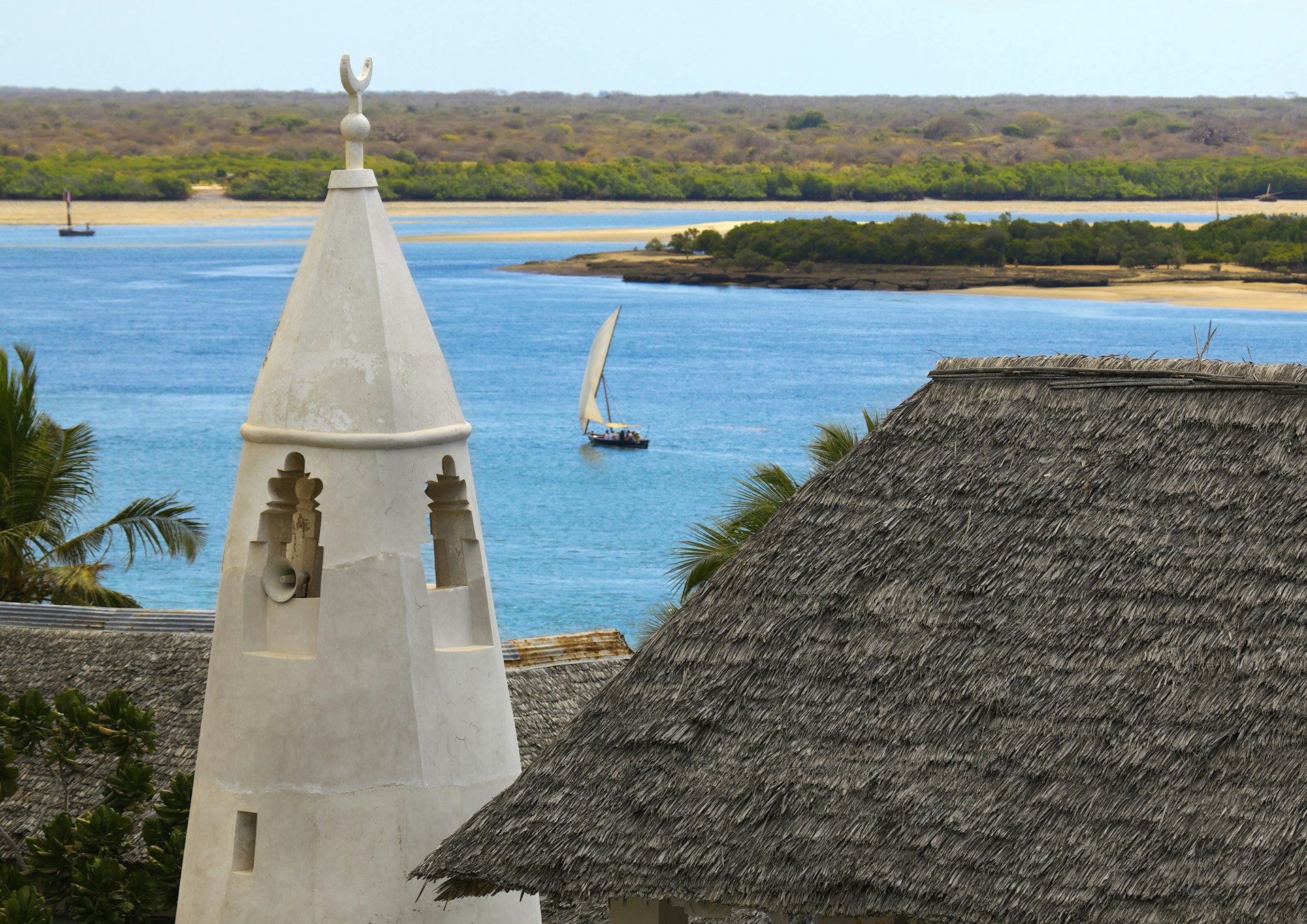
The history of Lamu
While the cargo may have changed in the seven centuries since Lamu’s existence was first documented in the world’s literature, the activity has not. The fortune of this tiny Kenyan archipelago has always been tied to the ebb and flow of the sea. Mariners first arrived on monsoon winds pushing them across the Indian Ocean from Arabia in the 10th century.
By the 13th century, Lamu had become an important commercial center on mercantile highways, entirely reliant on seasonal, or trade winds: once a year, ships from India, China, Persia and Arabia would cross the seas bearing silk, carpets, porcelain and spices. When the winds turned, the ships would return east, groaning under the weight of their African spoils: ivory and leopard skins, rhino horn and tortoiseshell, coffee and enslaved people. Lamu Town became one of the most important settlements on the east African coast. Wealthy merchants and plantation owners moved in, building grander and grander houses with coral stone, mangrove poles and lime plaster, as are still used today.
The abolition of slavery put an end to Lamu’s economic golden age, but the archipelago’s identity remains wedded to the influences that blew in on the trade winds all those centuries ago. Swahili (from Sawahil, the Arabic word for coast) blends Africa and Arabia, black magic and Islam, and pervades every part of Lamu’s character. Imams still call the Muslim population to prayer at the 40 mosques on the island a thousand years after Arab traders brought their religion ashore.
Lamu Town could be uprooted from Kenyan soil and whisked to Oman, 2,200 miles away, and look perfectly at home. The archipelago’s stone houses, or nyumbe, follow Arabic architectural principles, with Swahili twists. In every porchway opening onto the town’s alleys some small social scene is played out: shy couples courting, schoolgirls giggling, elderly men stopping for a mango juice with a neighbor.
Behind them, thick, carved mahogany doors keep domestic life closed to the outside world. Those invited inside find a courtyard open to the skies, traditionally used for cooking and socializing, and a series of high-ceilinged rooms beyond – the one farthest from the street and its prying eyes occupied by unmarried women. In the finest houses, walls are lined with deep niches, once used to hold spices and porcelain, but now more likely to house a tinny radio or a photo of Mecca in a plastic frame.
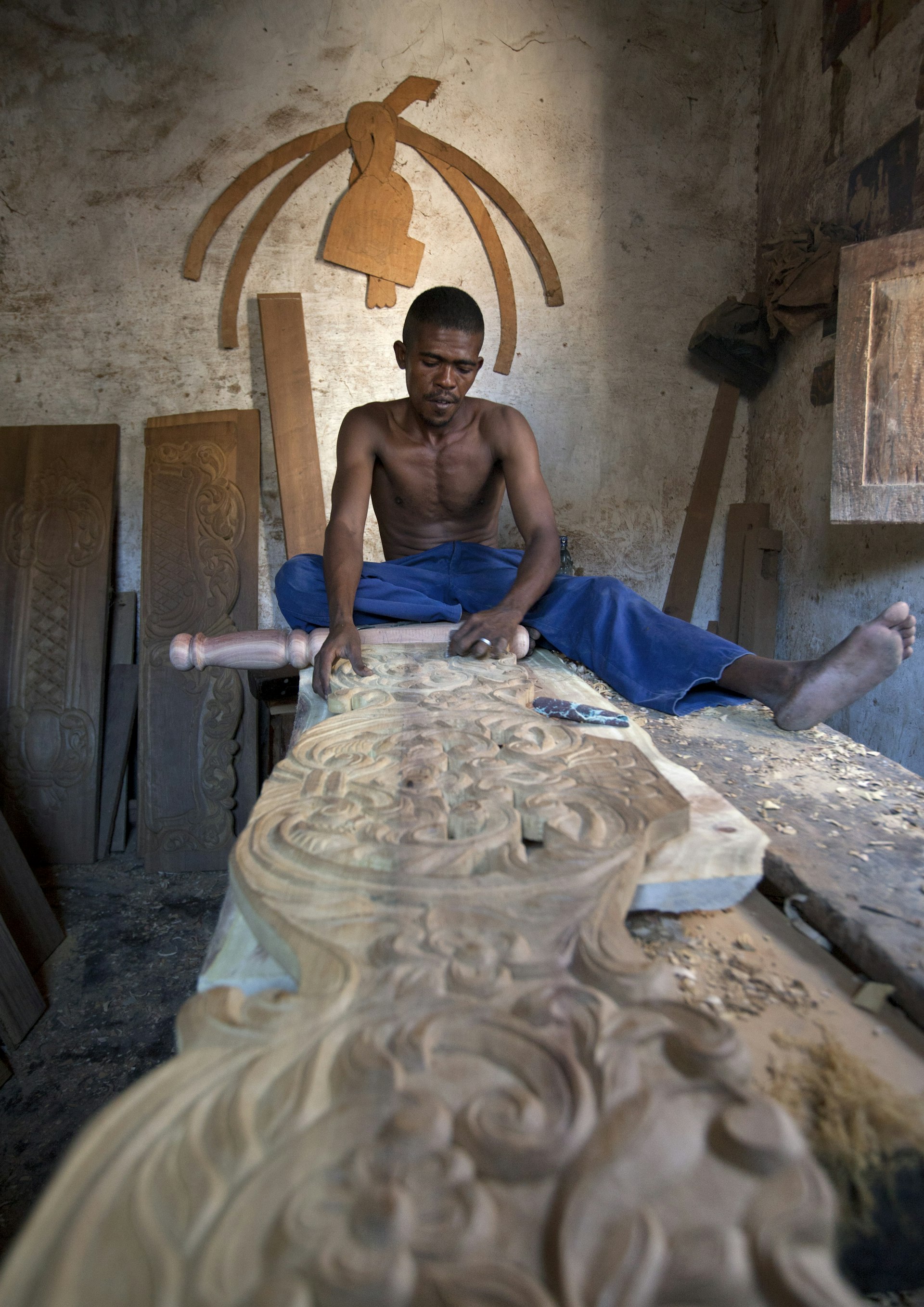
The woodworker of Lamu
In many of Lamu’s restored nyumbe, the furniture was turned by the hand of one of Kenya’s most respected wood carvers, Ali Abdalla Skanda. His workshop faces the sea on the northern edge of Lamu Town and is a mess of door frames, bed posts, half-finished chairs, cobwebs and wood chippings. Cuts of mahogany, ebony, teak, iroko and mangrove are stacked against the wall in a dark backroom.
A frail man in a pale kanzu robe and embroidered kofia hat, Ali sits on a low stool by the doorway, swatting flies from his face. His daughter, Sukhila, hands out milk on the front step to passers-by while his son, Mohammed, his eyes a luminous golden-brown, seals a deal with an American customer with a firm handshake. "We take orders from as far away as New York and London," he smiles. "My father is a genius."
It’s a genius that took Ali to Zanzibar and Somalia as a young man, working as crew on a ship so he could pick up different carving styles and techniques away from his home town.
"My father tried to make a cocktail – Indian styles, Indonesian styles, Karachi styles," Mohammed explains, translating his father’s Swahili. "Now it is his style. Me, my hobby is to copy the old furniture. I make beds and chairs with secret compartments."
Mohammed is one of over a hundred students whom his father has taught through the years. And Ali gains his greatest happiness from this, not the fact that he carved the main door gracing Kenya’s Parliament House in Nairobi or many of the doors in Lamu.
"He has been carving for 60 years," Mohammed says. "His workshop in Lamu was the first and is now surrounded by 50 others. He gives people a good life, a special skill."
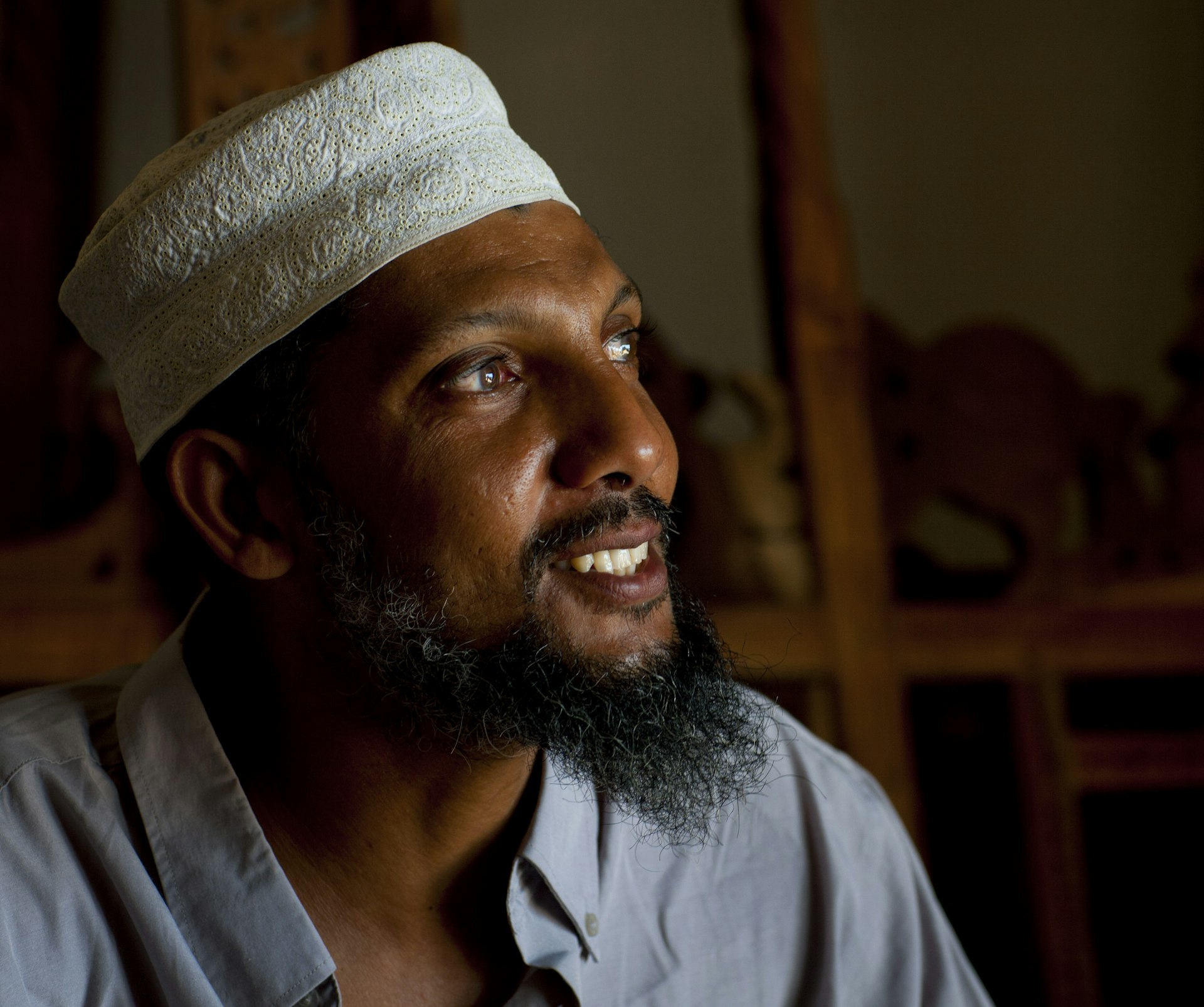
Ali’s passion for carving began when he was a boy, building his first boat under the supervision of Muhamadi Kijuma, a master woodworker whose life is celebrated in the Lamu Museum. The wooden dhows that ply the waters around Lamu are based on the Omani sailing boats that were once vital for the region’s trade. In true Swahili style, they have been adapted, retaining the triangular sail of the original but taking elements of Mozambiquean dhows and the Portuguese galleons that appeared on the horizon in the 16th century.
The archipelago’s dhow-building center now lies five miles around the Lamu coast in the village of Matondoni, a web of single-story mud-and-wattle houses flanked by coconut palms and alive with the sound of hammering. The beach is littered with the carcasses of rotting dhows.
A young man, Mickey, sits at one, pushing balls of cotton wool soaked in coconut oil into cracks to make the vessel watertight. At his feet lies a pile of rough nails. Mahmood the blacksmith squats in his shack examining the next batch, their angular tips still red from the fire. He stirs the embers with bellows made from an old cement sack, and wipes his smoke-grimed face with gnarled fingers. He is the village’s only blacksmith; the boys here want to be sailors, not landlubbers.
"We are from the sea," explains Mickey. "Dhows are our culture."
While Lamu’s fortunes may no longer come and go on the trade winds, the dhows that were swept in on them may yet offer its future. Other than the 2,500 donkeys on the island, the dhow is the preferred mode of transport, used for haulage and fishing and to ferry people between islands. For the past 20 years, it has had a new role. Mickey gestures to a large, square-sterned dhow anchored in the channel off Matondoni.
"Before, they went sailing to Arabia and India. Now they go sailing with tourists."
The dhow in question is Swalihina. The boat was found in a state of decay by the owners of travel company Basecamp Explorer, who decided to save her. They started a dhow school on the island, employing local boys and teaching them how to repair the boat using traditional techniques. After a reconstruction job that took five years, Swalihina is the most magnificent boat plying the waters round Lamu, 17 meters (56ft) of shiny mangrove boards and billowing sails. For the tourists who rent it, days pass in creaking idleness, jumping into clear waters shared by turtles, parrotfish and coral. Nights are spent on deck under skies dusted with a million stars, listening to the water slap against the hull.
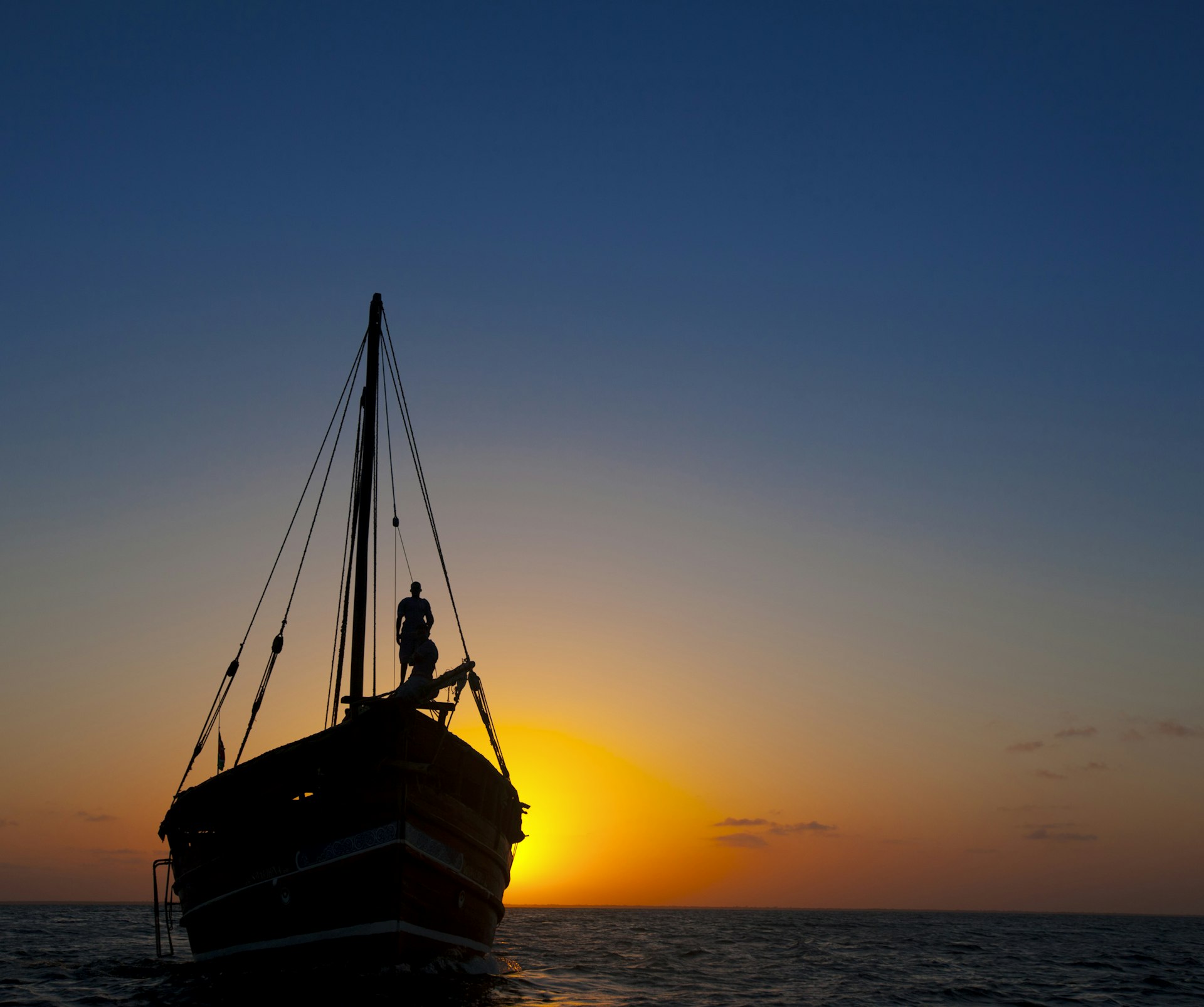
A culture of sailing
Basecamp has a serious purpose beyond the fulfillment of tropical fantasies. Settling back after a dinner of crab balls and kingfish pulled from seas now turning orange and purple under the setting sun, the company’s Annette Bulman explains, "When we first came here, we asked, 'What can we do to help the community and preserve the culture?' We wanted to teach young people how to make a living. They now have a trade – they’ll have that long after we leave."
It takes a crew of 10 to sail Swalihina. Captain Sahib’s nephew, Erry, an earnest 16-year-old in a near-constant state of apology for his impeccable English, has grown up with boats. Leaving Swalihina anchored a little way offshore, he rows over to Paté, the largest island of the archipelago and one of the least developed. As an 11-year-old, he spent a month here with his uncle, learning to sail every day from 7am until 9pm. He wanders along the beach and a small boy follows, clutching a handmade toy boat.
"I am only young in sailing but I have a lot of experience," he says. "I teach all of my school friends. Everyone wants to be a dhow captain."
Erry and his friends get to demonstrate their sailing skills in the dhow races that take place twice a year around Lamu. The most significant race forms an integral part of Maulidi, a four-day festival celebrating the birth of the Prophet Mohammed. For many Muslims on the coast, the festival is the next best thing to the Hajj pilgrimage to Mecca. Maulidi climaxes in a procession through town from the tomb of Ali Habib Swaleh, an Islamic scholar who built the island’s main mosque, Riyadha.
In the nights leading up to the procession, village elders from Matondoni line up outside the mosque, performing a slow and hypnotic dance, holding their walking sticks in the air before dropping them as one on the dusty ground. Devotees push shilling notes under the performers’ kofia caps, conferring good luck on both dancer and donor. The custom is repeated in Mkunguni Square, children taking the place of the elders, and in houses across town.
On a windswept rooftop close to Ali Skanda’s workshop, the manager of Lamu Museum holds her own Maulidi. Husna is a whirl of pink and gold polyester, with a crown of shillings on her head and fanned across her dress. Children, from toddlers to teenagers, sing along to a band of percussionists, and are rewarded with samosas and bottles of bright pop.
Maulidi is equal parts sombre religion and island craziness; it’s Islam, Swahili-style. Fahra Swabir, who the previous night had danced and chatted unselfconsciously in a T-shirt and jeans on Husna’s rooftop, today sits quietly on a wall with her friends, all of them swathed in head-to-toe black bui-buis.
"Today I am ninja," she laughs. "There are so many men around."
There are so many of everyone around: boys in football shirts and shorts; Muslim celebrants from Mombasa in bright silk abayas; Maasai in red, checked cloaks; local women in printed bantu wraps; tourists carrying camcorders and bemused looks; journalists from Nairobi.
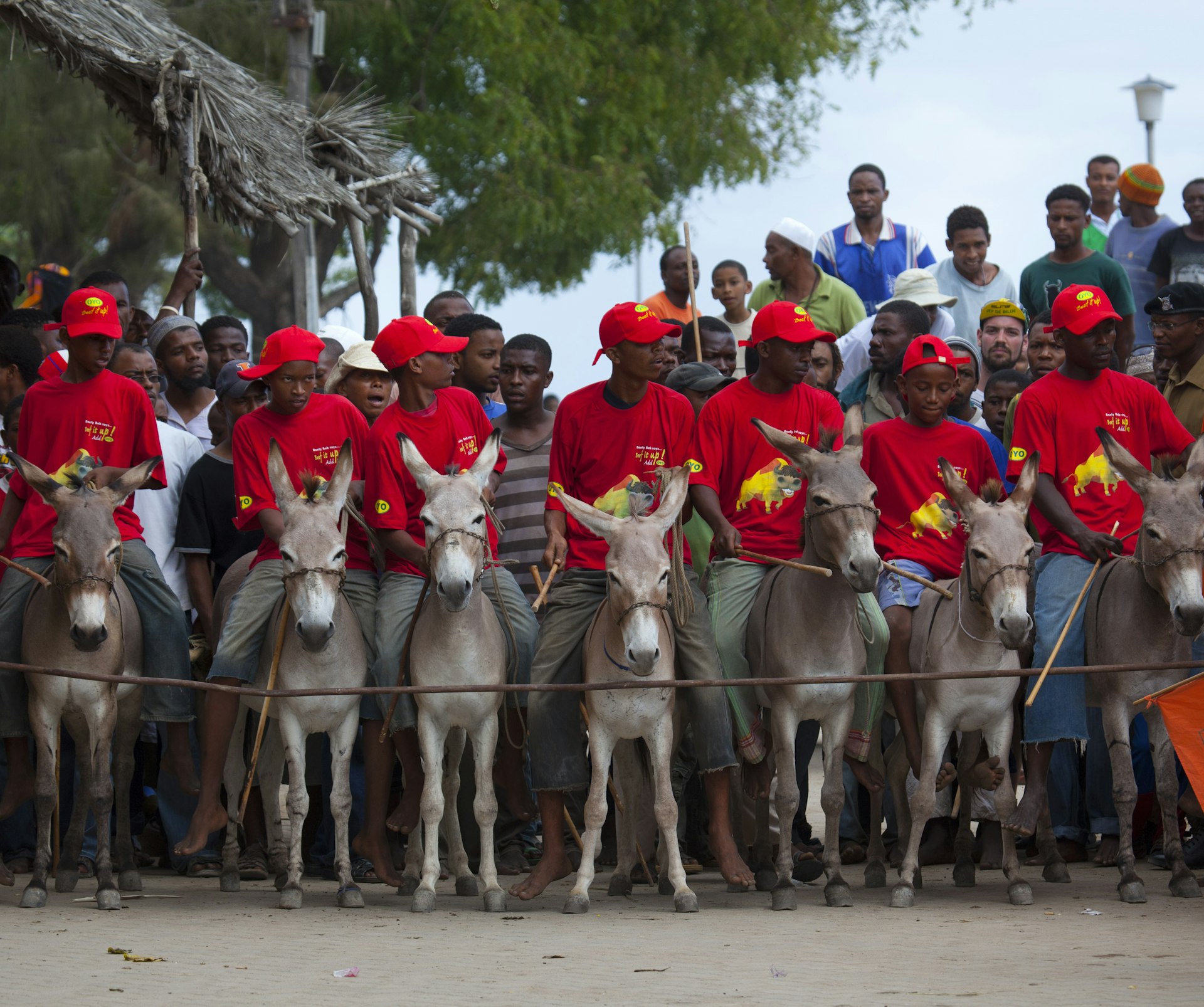
Off to the races
They’re all here for Lamu’s most peculiar interpretation of Maulidi: the donkey race. Lining up for registration with their owners, the donkeys (Barack Obama and Wayne Rooney among them) appear nervous and easy to frighten. Hollers from the crowd and the sharp clack of hooves on pavement announce the start of the race, and soon the donkeys are hurtling along the corniche, carrying riders as young as 12 on their backs. It’s more Pamplona than Blackpool, and the donkeys skitter into spectators, throwing off their jockeys and refusing to budge. It is too much for Fahra and she soon disappears to wait for the dhow races.
There’s no doubt that the races are Maulidi’s main cultural event. The crowds that drifted away as the donkeys tore out of sight are back, and twice as large. Small dhows sit low in the water, heavy under the weight of 15 to 20 men. They mend the sails, remove and replace the rudders and eat a meal of beans washed down with sprite. Erry is keen to get started.
"This is part of our culture. Our grandfathers did it, our fathers did it, we do it," he says. "But it is hard work. You need to be strong like a crab to put up the sail. If you are not, the dhow will throw you in the water." He waves as his boat heads to the starting line. "It is OK whatever happens. It is a game to win. It is a game to lose."
The start is somewhat easier to miss than that of the donkey race: a horn blows, sails are unfurled and 12 dhows drift past Lamu Town and up towards Paté Island. The crews sit back and chat, calling to friends following on motorized launches.
As the dhows turn into the wind for the return leg, the crews leap into action. On each boat, men throw themselves from port to starboard for balance and scamper along boards hanging over the water, pulling at the sail to keep their boat upright. One boy continuously smacks the water with a branch blessed by a magic man.
The dhows lean at impossible angles into the wind, looking like they might topple at any moment. Erry’s boat is soon out of the race. A dhow named Arsenal, after the English football club, leads from the beginning and wins by some margin. The victors and runners-up celebrate wildly: joined by crew from other boats, they swing from the mast, jump into the water, sing and dance and howl as water sloshes into the hull.
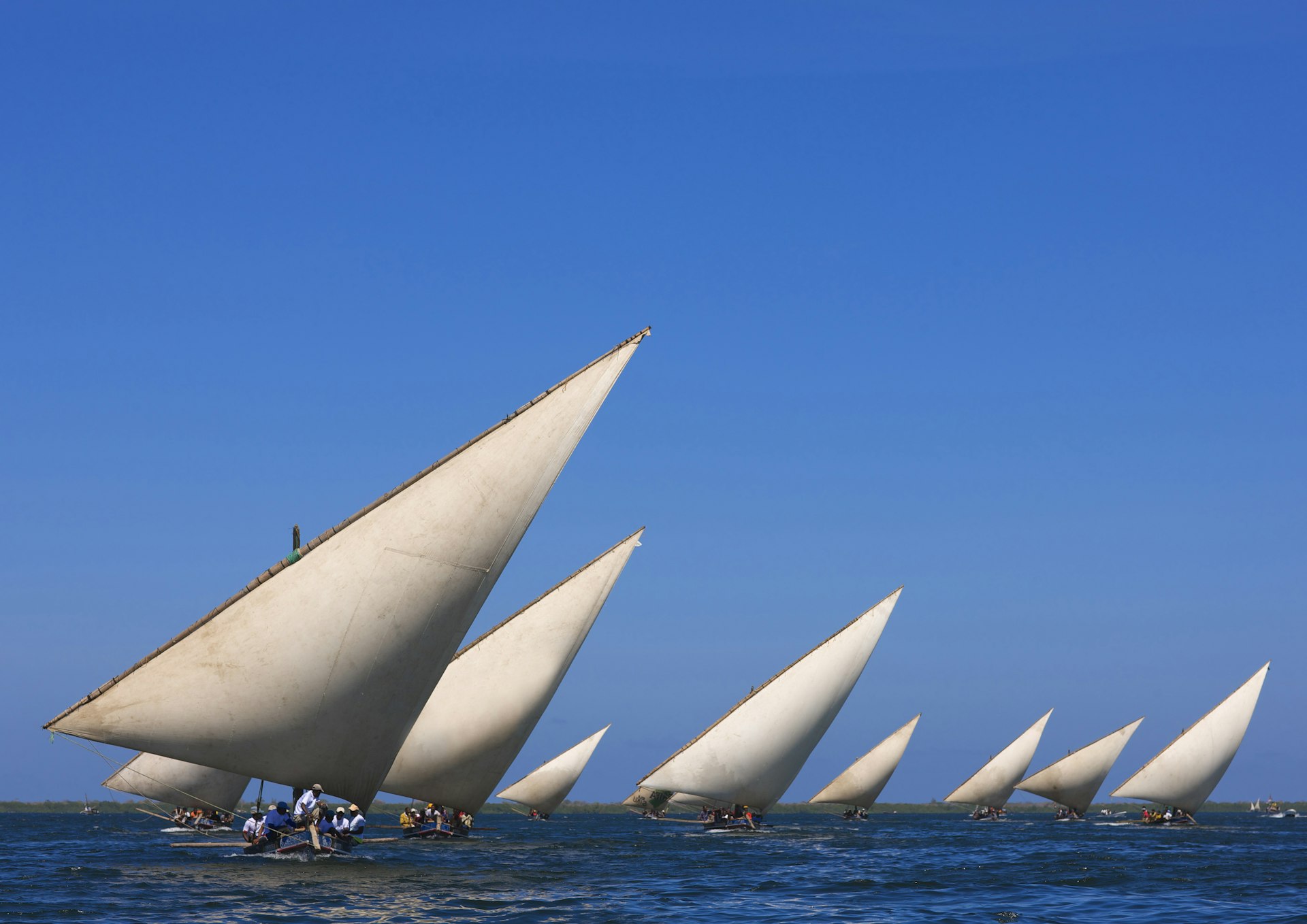
Late into the night, the Arsenal team can be heard running up the corniche, singing. Tomorrow, they’ll take the trophy back to Manda Island. Perhaps in 600 years’ time, a visitor to these islands will find that trophy alongside the pieces of 15th-century Chinese porcelain that still wash up on the shores, the remnants of mariners who crossed oceans to seek their fortune, and found it on a tiny archipelago called Lamu.
You might also like:
Turning myth into reality: the white lions of Timbavati
Travel throwback to Hong Kong: Where worlds collide
Travel throwback: The lost stories of Damascus
This article was originally published in the October 2011 issue of Lonely Planet Magazine.
Get more travel inspiration, tips and exclusive offers sent straight to your inbox with our weekly newsletter. Make sure you're ready for anything with travel insurance from our trusted partners.
